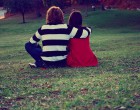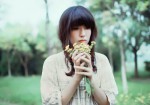
颐和园的景点介绍英语作文初一【一】
??颐和园英语作文范文The Summer Palace can be divided into two parts: Longevity Hill and Kunming Lake. The whole garden covers an area of 290 hectares, of which three- fourths consists of a lake and rivers. This imperial garden features 3,000 room-units and covers an expanse of 70,000 square meters with more than 100 picturesque spots of interest. The layout of the Summer Palace includes three groups of architectures: palaces where the emperor attended to state affairs, resting palaces of the emperor and empress, and sightseeing areas. Entering the East Gate we will come the office quarters. Entering the East gate we will come to the office quarters. The annex halls on both sides were used for officials on duty.
This is the Gate of Benevolence and Longevity. Above the door there is a plaque bearing the same name in both Chinese and Manchurian characters. The gigantic rock in the foreground is known as Taihu rock, or eroded limestone, quarried in Jiangsu Province and placed here to decorated the garden.
On the marble terrace sits a bronze mythical beast, known as Qilin or Xuanni. It was said to the one of the nine sons of Dragon King. A point of peculiar interest is that it has the head of a dragon, antlers of a deer, the tail of a lion and hooves of an ox, and is covered with a unique skin. IT was considered an auspicious creature that brought peace and prosperity.
This grand hall is the Hall of Benevolence and Longevity. It was built in 1750, and was known as the Hall of Industrious Government. Emperor Qianlong ruled that the halls where monarchs attended to state affairs would be named after them. After the rebuilding of the Summer Palace, the hall was renamed, suggesting that benevolent rulers would enjoy long lives.
The arrangement of the hall has been left untouched. In the middle of the hall stands a throne made of sandalwood and carved with beautiful designs. In the background there is a screen carved with nine frolicking dragons. On either side of the throne there are two big fans made of peacock feathers, two column-shaped incense burners, crane-shaped lanterns and an incense burner assuming the form of Luduan, a mythological animal which was suppose to have the power to prevent fire. The small chambers on eight side were where the Emperor Qianlong and Empress Dowager Cixi rested and met officials on formal occasions.
On the verandah in the foreground of the hall there are bronze statues of dragon and phoenixes which served as incense burners on major occasions. They are hollow and smoke comes through holes on their backs. Also on the veranda are Tai Ping (Peace bronze water vats made during the reign of Emperor Qianlong. As a precaution in case of fire, a fire was lit underneath the vats in the winter to keep the water in them from freezing.
(At the entrance of Garden of Virtuous Harmony
Outside the East Gate–in front of the Hall of benevolence and Longevity- in front of Garden of Virtuous Harmony-in front of the Grand Theater Building- a lakeside walk from the Garden of Virtuous Harmony to the Hall o Jade Ripples- in front of the o Jade Ripples- in front of the Yiyunguan (Chamber of Mortal Being-Hall of happiness and longevity- in front of the Yaoyue (Chamber of Mortal Beings-Hall of Happiness and Longevity-in front of the Yaoyue (Inviting the Moon Gate of the Long Corridor- strolling along the Long Corridor- visiting an exhibition of cultural relics- in front of the Hall of Dispelling Clouds- inside the Hall of Dispelling Clouds- atop the Tower of Buddhist Incense- on a hilltop leading from the back door of the Tower of Buddhist Incense- on a hilltop leading from the back door of the Tower of Buddhist Incense- inside the Garden of Harmonious Interest –outside the south gate to Suzhou Shopping Street- atop the stone bridge inside the Suzhou shopping street –on the road from the south gate of suzhou shopping street- on the road form the south gate of suzhou shopping street to the marble boat- in front of the ruins of the Garden of complete spring –along the lakeside by the marble boat-boating on the Kunming Lake-leaving out through the East Gate.
(Outside the east gate
Ladies and Gentlemen:
Welcome to the Summer Palace. (After the self-introduction of the guide -interpreter I hope this will be an interesting and enjoyable day for you.
During our tour, you will be introduced to time honored historical and cultural traditions, as well as picturesque views and landscapes.
The construction of the Summer Palace first started in 1750. At that time, the Qing Dynasty was in its heyday and China was a powerful Asian country with vast territories. The monarch in power then was Emperor Qianlong. With supreme power and large sums of money, he summoned skillful and ingenious artisans from all over the country to carry out this construction work in honor of his mother's birthday. After 15 years and one seventh of the nation's annual revenue spent, the Garden of Clear Ripples was completed and served as a testimony to China's scientific and technological achievements. In 1860, this vast royal garden was burnt down along with the Yuanming Yuan (Garden of Perfection and Brightness by Angol-French allied forces. In 1888, Empress Dowager Cixi reconstructed the garden on the same site and renamed it the Garden of Nurtured Harmony (Summer Palace. Characterized by its vast scope and rich cultural embodiments, the Summer Palace has become one of the most famous tourist sites in the world.
This is the main entrance to the Summer Palace-the East Gate On top of the eaves of the door there is a plaque bearing a Chinese inscription which means "Garden of Nurtured Harmony", whose calligrapher was Emperor Guangxu. The gate that you are now entering was used exclusively by the emperor, the empress and the queen mother. All others used the side doors.
颐和园的景点介绍英语作文初一【二】
在我放假期间,我去了一次白音呼社旅游景点。虽然我生在大草原,但我从来没见过它。这次旅游让我亲自去慰问了一下大草原。
早晨,我坐着车,怀着喜悦的心情,到白音呼社景点去旅游,一路上也没感觉有多远。我一直在看路边草原上的牛群羊群甚至还有骆驼不过不多。它们都在吃草。不一会车停了,我们到了目的地,我刚下车,一股清新的空气迎面扑来,忽然间,有了一种放松的心情,平时学习带给我的压力顿然间消失了。
那有辽阔无垠的大草原。有一些娱乐场所,比如,骑马山地摩托等等……还有几座洁白的蒙古包。那还有一座神圣雄伟的敖包山坐落在山顶上,有来自五湖四海的游客骑马或步行去祭敖包,表示对自己的祝福,敖包山上还挂着五颜六色的哈达,这是一种民族的习俗。我们玩了一上午,都玩得很开心。
多么有趣的白音呼社旅游啊!
颐和园的景点介绍英语作文初一【三】
八月底是秋季了是去九寨沟的好时节,我是今年暑假的这个时候去的,是从成都亲戚家出发的。
网上搜索了一些线路,不过到了就在那边还是一下子就蒙了,茫茫景区,从这个景点到那个景点的,怎样走最省时间,我们全无概念,幸好送我们去景区的出租车师傅对景区很了解,一路上给我介绍哪些景点的特色,怎么走,简直比导游还厉害,导游费又省了,这位师傅还很幽默风趣,给我们介绍了很多当地文化,让我们一下子对当地觉得亲切多了,后来去黄龙,我们也是坐的这位师傅的车,一路上帮了我们不少忙,为了感激这位师傅,也方便后来亲戚们出行,途中经过雪宝顶,听潘师傅说黄龙与九寨的水都是由雪宝顶的冰雪而来的,而且雪宝顶的水晶也是很有名的,但为了自然保护所以每年限量开采,这也是雪宝顶的水晶不被众人所知的原因,我想人们也不愿从此看不到黄龙与九寨沟的风景吧!
一路上我感受到藏、羌族的文化。路上有个藏族姑娘搭车,为了感谢我们她给我们唱了首歌,歌声让我震惊,那是雪域高原的歌声,优美动听,让我对藏文化产生了浓厚的兴趣。
颐和园的景点介绍英语作文初一【四】
以“惊、险、奇”著称于世的司马台长城,位于密云县古北口镇境内,距北京市区120公里,是我国惟一保留明代原貌的古建筑遗址。它南靠白龙潭风景区,西邻金山岭长城,东靠云岫谷游猎区,是集旅游观光、科教、探险、温泉疗养、休闲度假为一体的旅游佳地。
司马台长城全长19公里,敌楼35座,始建于明洪武初年。司马台长城惊险奇特,横卧于山峰之巅,并在陡峭的山峰间架起一座天梯,倾斜度达85°,有百米之长,天梯两侧皆为深渊,而天梯的石阶窄小,仅为一砖之宽,任何人想轻松地通过这里都将不会是一件容易的事。整段长城构思精巧,结构新颖,形态各异,集万里长城所有特点于一处,形成了一段“奇妙的长城”。望京楼是司马台长城中的最高点。著名长城专家罗哲文教授指出,“长城是中国建筑之最,而司马台长城是中国长城之最”。
这里东观“雾灵积雪”,西望“蟠龙卧虎”,北看“燕山叠翠”,南瞧“水库明珠”,大好河山尽收眼底。位于陡峭如削的危崖之上,有一道通天的石梯,只容一人攀登。
司马台长城还建造了登城隐形索道、游览峡谷索桥等设施,并有一年一度的司马台长城登山赛和司马台国际滑翔节、文化节。在这里,您可以鸳鸯湖上泛舟、游泳、垂钓,还可以山寨野味烧烤等。
天梯高耸入云端,天桥悬挂云海间。
婷婷玉立仙女楼,不登望京真遗憾。
颐和园的景点介绍英语作文初一【五】
我的家乡在江南,是一个鱼米之乡。
我的家乡有一个美丽的旅游胜地,名叫香湖岛。春天的香湖岛是一个生机勃勃的地方,夏天的香湖岛是一个热闹非凡的地方,秋天的香湖岛是一个落叶缤纷的地方,冬天的香湖岛是一个白雪飘飘的地方。这就是香湖岛一年四季的情景。
我家乡的香湖岛,春天的香湖岛一片五彩缤纷,那到处鸟语花香、生机勃勃的。夏天的香湖岛那里面一片人山人海,到处都是游客,游客多的.都快要堵塞交通了。我们在这些游客之间穿梭,我差一点点被游客拥挤的都喘不过气来了。那里的九曲桥上也都挤满了人,我们连上也上不去,更别说在上面欣赏美丽的香湖岛景色了,我们只好耐心的等待旅客散去后才能再上去欣赏美丽的风景了。在一个小亭子里,看到了四个小凳子,但是好做了八个人呢,其中有四个妇女,一个妇女抱着一个小孩子,四个妇女一共抱了四个小孩子,只有这一个地方不是那么拥挤的。
在我们先进来走不久的地方有很多大大小小、各种颜色很美丽的荷花。有红色的,像被红色的染料染过一样;有黄色的,像被黄色的油漆漆过一样;还有白色的荷花,像冬天里的雪一样雪白。秋天的香湖岛哪里面一片黄色的情景,遍地都是黄色的落叶,,像是给地上铺盖了一层黄色的地毯。冬天的香湖岛那里一片白色的情景,一片白色的大雪,像是给香湖岛铺上了一层白色的棉絮。在我们离开的道路旁边有很多小的蘑菇形状的垃圾桶。
我们离开的大门旁边有一块非常大的石头,上面雕刻了三个大字:“香湖岛”并且涂上了非常鲜艳的红颜色,非常醒目耀眼。我恋恋不舍的离开了这美丽的香湖岛。每天晚上,我都会梦到,我么以前去美丽的香湖岛游玩的情景,真美丽啊!
颐和园的景点介绍英语作文初一【六】
四月,万物复苏,柳絮纷纷飘落了下来。我悠闲地走在灞河边上,慢慢地,享受这场一点也不寒冷的“鹅毛大雪”。
三月,柳絮还尚在孕育之中时,柳树上的绿叶像是在向你挥手,说:“你好呀!”向远处望去,那一条条树枝像是嵌上了翡翠一样,不禁让我想起贺知章的《咏柳》:碧玉妆成一树高,万条垂下绿丝绦。看,这碧绿的枝条就像垂下的万千条丝绦一样,那么美丽,那么柔软,让人忍不住想伸手摸一摸。再向前望去,有的柳树十分臭美,正对着镜子似的水面摆弄着自己的头发。
一阵风吹来,柳枝随风摇曳着,风姑娘静静地为柳姑娘梳着头,还为她那长长的秀发绑上蝴蝶结,真美啊!
当柳絮成熟时,一个个白色的降落伞从树上飘下来,多像飞舞的雪花啊!但有的柳絮比较调皮,在空中飞来飞去,迟迟不肯落下来。
瞧啊,灞桥的春天是如此的美啊!如果你春天来西安,一定不要忘了去灞桥春游呀!
颐和园的景点介绍英语作文初一【七】
木府是一个历史悠久的古建筑,它有着浓浓的“历史气息”,俗话说“北有故宫,南有木府。
一跨进木府朱红色的大门,就会觉得自己是古代的童子,在木府里游玩。站在广场,你可以看到一群金碧辉煌的宫廷式建筑。第一座殿是议事厅,走进厅里,你会看见中间有一把椅子,椅子上放着一张昂贵的老虎皮,想必过去一定是这里最有权威的人坐在这里发号施令。
进入第二个宫殿,是万卷楼,里面有好多古代的藏书,这让我想到古代人多么重视学习。
进入第三个宫殿,是护法殿,你可以看到很多菩萨,正中间是玉皇大帝,身穿金黄色的衣服,上面有着各式各样的珠宝,非常庄严。
顺着栈道,我还参观光碧楼和玉音楼,最后,爬到了山上的最后一个宫殿,叫三清殿,拜完佛,站在殿外,丽江古城的建筑美景映入我的眼帘,瞬间把历史写在我的脑海里。
这次的木府之行让我看到古代人民的智慧,我期待下次再来这里。
















